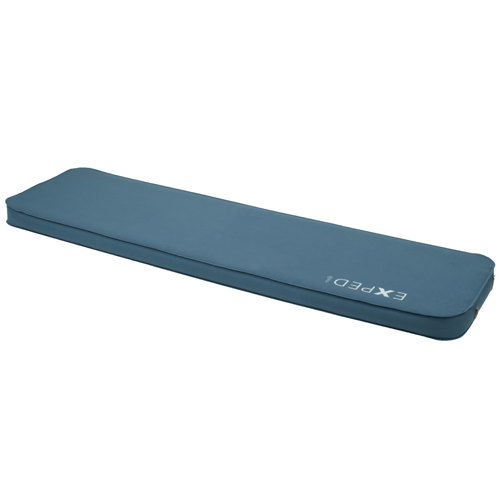
No matter how I mess with the inflate/deflate valves, there's always air stuck in the mat. I spend around 20 minutes every time attempting to get it nice and flat and eventually give up. Secondly, good luck ever fully deflating the mat. Yes, my expectations are correct- I know it's not geared towards tent campers and it's not meant to be stowed away and taken out every day. It's more difficult than any pad, tent, or sleeping bag than I've ever used. Once you have it out of its pack sack, you might as well give up on ever fitting it back into it. Where this sleeping mat disappoints is in its deflating and its storage.

The size is just right for car camping in my 2000 Toyota 4Runner, and just big enough for yourself and an SO, assuming you're comfortable with one another. In that regard, I see no way it could be more comfortable. Worth It? Depends on Your Time & Patience Waterproof Compression Bag and Telecompression Bag Note: Even the most elaborate suspension system can only work perfectly when fitted correctly! And as no two backs are identical, we recommend testing backpacks with sample weights in an outdoor specialty shop.ĮXPED sleeping bags come in different lengths and widths, depending on the style, to ensure a good fit for a variety of different users and body types.ĭimensions (closed): 20.1 × 10.2 × 7.5 in Use a measuring tape to measure the distance between the top edge of the shoulders or C7 vertebrae (the one that protrudes when facing down) to the top crest of the hip bone (pelvis). But no rule without exceptions and sometimes a shorter torso length is better, for example in alpine or mountaineering situations where a short back allows easy access to the climbing harness. The center of the hipbelt ideally rests on the hip bone crest (pelvis) in order to bear the bulk of the load (refer to diagram) especially on large internal frame backpacks. Defining torso length is not necessarily critical on a daypack but crucial on backpacking or alpine touring packs, as only perfect fit can warrant transfer of a bulk of the pack weight to the hips. Back in 2016, I reported on exciting innovations that were, for the first time, enabling two people to sleep together comfortably outside.Depending on pack volume and intended use the suspension system of a backpack becomes an essential feature. Now I’m even more excited to report that the nascent couples camping space is already evolving quickly. New pads promise to make such sleeping arrangements more comfortable, lighter, cheaper, or considerably easier to transport than ever before. I want to get right to the innovations, so excuse me if I recap only briefly. Until just a few years ago, if you wanted to cuddle your buddy in a tent, you had to do so either across the gap between your two separate sleeping pads or, worse, camp on one of those too cheap inflatable air beds that provide zero support or insulation. Something better was needed, and that need was met by two amazing products: the Exped MegaMat Duo and the two-person Big Agnes Q-Core SLX. The former is ridiculously plush but way too big and heavy to fit in a backpack. The latter actually creates a lighter, more compact base weight than two one-person pads. The new Exped DeepSleep is a three-inch-thick pad that will bring most of the MegaMat’s comfort to a more affordable price point. The trouble with the Exped MegaMat is that it’s both expensive and challenging to pack, even in a car. To remedy those issues, the Swiss mountaineering brand will reveal a slimmer, more affordable luxury camping pad this week called the DeepSleep. Like the MegaMat it will be available in both regular and long-wide sizes. The long-wide DeepSleep Duo matches the full-size bed length and width of the long-wide MegaMat Duo (77.6 inches by 52 inches) but will cost $279 to the MegaMat Duo’s price of $389. Compared to the four-inch-thick MegaMat, the DeepSleep measures just three inches thick but still features a comfortable, durable, stretchy, and totally flat sleeping surface, vertical sidewalls, and the two separate flat valves for inflation and deflation.


It sacrifices the MegaMat’s plush tricot top fabric for a slicker, cheaper alternative. The long-wide DeepSleep Duo weighs just under 9.9 pounds and packs down into a 27.6-inch-long-by-11.8-inch-thick roll. The long-wide MegaMat Duo weighs 10.2 pounds and packs down to the same size. The regular MegaMat remains the best option for most car campers. I laid the DeepSleep out next to the MegaMat to see how they differ. Immediately, I noticed that while sitting on the thinner DeepSleep, my butt would hit the floor if the pad wasn’t inflated absolutely as firm as it gets. That never happens with the MegaMat, even at lower levels of inflation.


 0 kommentar(er)
0 kommentar(er)
